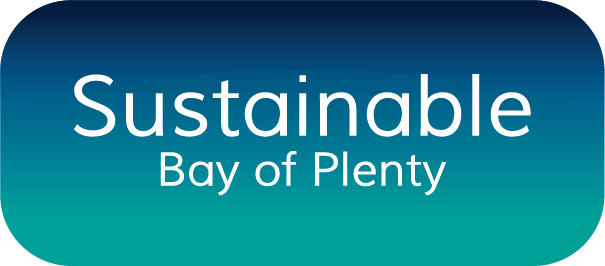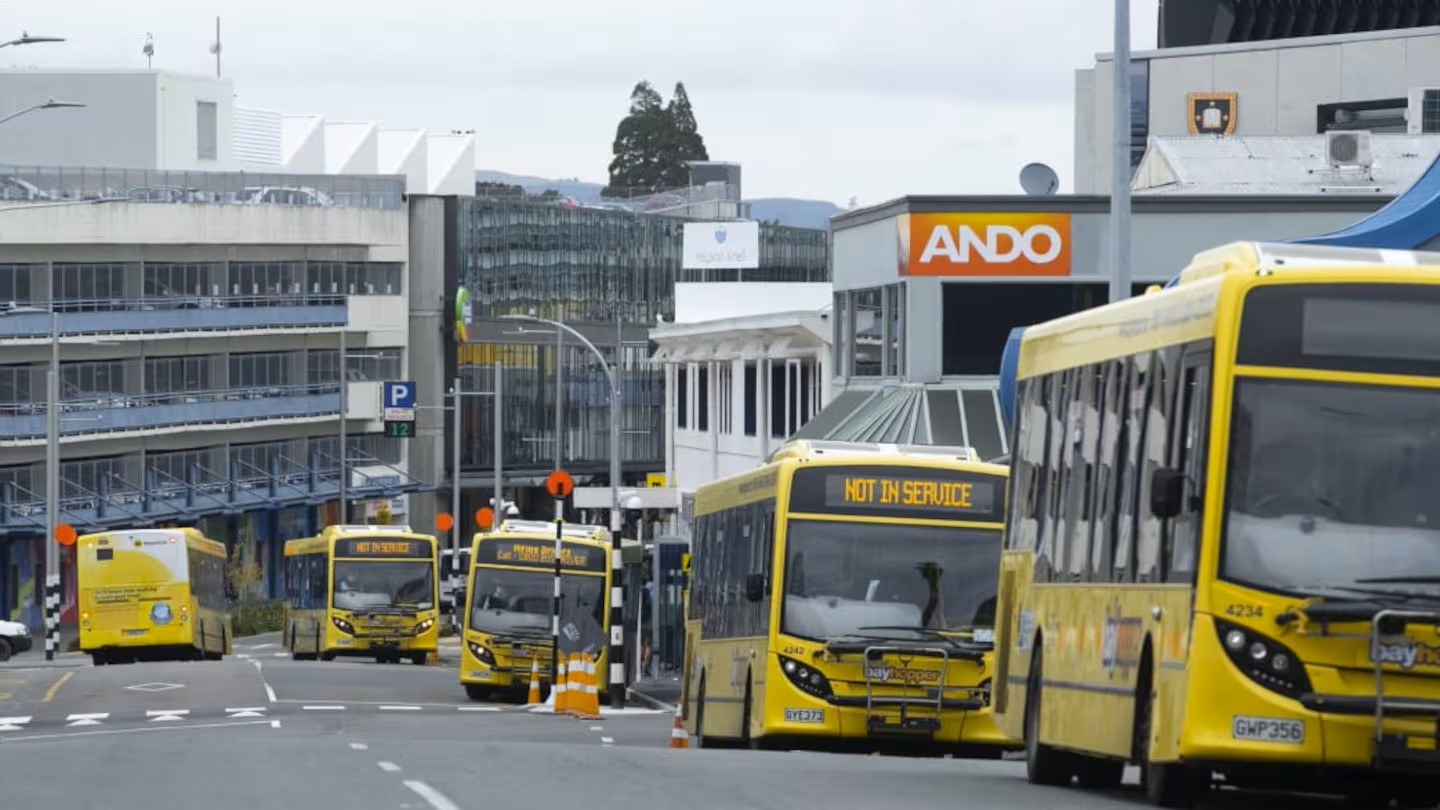Photo from Sunlive: Durham St ‘interchange’
Today’s media report describes how more ‘chickens’ have come home to roost for Tauranga City Council (TCC) – this time regarding Tauranga’s planned central city bus ‘interchange’, which the city’s Commissioners had committed to complete by December 2023.
The Council yet again seems to be putting property developers and an unfunded, non-essential council project (the “Civic Whare-Exhibition Centre-Museum”) ahead of the city’s number one priority: addressing traffic congestion.
Sustainable BOP was one of the ‘stakeholders’ that took part in workshops to help determine an optimal location for the Tauranga CBD bus interchange. Two workshops were held, with the crucial third workshop scheduled for March 2023.
That meeting was delayed several times over the past year, as TCC undertook confidential meetings and workshops. Now we’re told the stakeholder meetings have been scrapped altogether.
We repeatedly told TCC they needed to engage widely with businesses and other stakeholders, and to be open and transparent – but our suggestions were ignored. Ironically, at their latest Council meeting on 18 March 2024, the Commissioners bemoaned the lack of stakeholder engagement!
More importantly, the stakeholders indicated near-unanimous support for a good quality bus interchange located near major central city destinations, designed to make it easy to transfer between buses – by far the most important consideration in a city where the CBD is often just a transfer point.
Specific options for routes and locations were put forward by BOP Regional Council, public transport experts, architects, and other community advocates – including a free electric shuttle bus around the city centre – but all were rejected by the Commissioners.
That left TCC’s proposal for a dozen or so bus stops scattered around the CBD, to be rolled out in conjunction with Tauranga’s new city centre one-way system. However, at this latest Council meeting, the Commissioners even rejected that option, because of feedback they received (not shown to the public) from Durham St property owners and previously from developer/s in Hamilton-Willow St area.
We strongly support TCC keeping all property owners and tenants informed about the different options. However, those discussions need to be open and transparent, with all vested interests put ‘on the table’. Moreover, the wider public are equally important stakeholders, as they use the buses and use the streets in the CBD.
The vested interests of developers were apparent in one developer’s comments that “suggested the stops remain where they were further up Durham St or be spread along the southern end of the street with three separate stops on either side. The owners were opposed to the ‘super stops’ but supported separate bus stops.”
That might be great for the developers’ profits, but not good for bus users, who would have to use a bad location and walk longer distances and cross the road to swap buses – sometimes in wet and windy conditions. Which reinforces Sustainable BOP’s call for an open, transparent and informed process that invites all stakeholders into the room.
We don’t want a developer or business to have a bus interchange plonked in front of their building – but we also don’t want Tauranga’s vitally important bus services to be hampered by private property owners. Of course, that means TCC might need to step up and build a proper bus interchange at a location acceptable to everyone.
A TCC staff member at the council meeting bemoaned the fact they could have had a better solution “if the future location had been discussed in this amount of detail when doing the Durham St upgrade…”. This pointed to the past three years of delays and confidential meetings and workshops, happening while the bus service has been severely compromised by the current sub-standard CBD bus hub.
And now the Commissioners have proposed to leave the current sub-optimal Durham St location as the main CBD bus hub – for possibly another five years or more! The meeting heard that a “bottom line” is to get all the buses off Grey Street, despite it being a popular bus stop. Yet it is common to see more people waiting for buses on Grey St than for the same buses on Durham St.
The dislike of buses was obvious in Commissioner Tolley’s statement “we don’t want to stop development … for some big empty yellow buses”.
Tauranga’s bus patronage is picking up again, but it’s completely normal in small cities for buses to be near-empty on their return journey. Like them or not, without the buses, parts of our city would be gridlocked at peak times.
The irony is that not only did stakeholders not want to “stop development”, we didn’t even want TCC’s proposed bus stops all along Durham St in the first place – which is what Anne Tolley was concerned about. Like her, we knew that Durham St is geotechnically better for high-rise developments than some other parts of the CBD, and we also knew there’s a specific demand for on-street parking spaces in Durham St.
Like the Regional Council, we understood that more people (especially older people) would use the buses if they could access a bus or shuttle on the flat of Grey Street and/or Willow St, close to the main destinations. TCC either don’t understand that or don’t prioritise it.
The point is that if you don’t attract bus users by having optimal facilities in optimal locations in the central city, it will compromise the whole bus network. All Tauranga bus routes currently run to the CBD and in the future they will all run through the CBD.
This is an important issue. We’ll all benefit from more people taking buses, as that frees up space on our busy roads. Moreover, Tauranga’s population is rapidly aging, so there’ll be far more people than ever who at some point will rely on a good bus service – which requires a good quality bus interchange in the central city.
There is no other major city in NZ that has such sub-standard public transport infrastructure, including the majority of bus stops having no bus shelters. One of the Commissioners’ key messages over the past 3 years has been that they are investing ($1/3 billion) in Cameron Rd upgrades to get more people on buses. Yet Cameron Rd Stage 1 wasn’t the weak link in the bus system – the lack of good transfer facilities in the central city (where all the bus routes connect) is far more important for current and potential bus users.
The key issue is that TCC’s Commissioners seem to have:
a) Been swayed by private property developers and owners, who don’t want buses near their developments, and
b) Pushed TCC’s own agenda – their Te Manawataki development – at the expense of bus users, the bus operators, BOP Regional Council (who control the bus network), and the wider public.
TCC previously rejected Regional Council’s two preferred CBD routes and locations and didn’t even invite Regional Council reps to be part of their discussion at this week’s council meeting, despite the obvious lack of understanding in the room about the current and future bus network.
For instance, TCC claimed that “at the moment, the bus service is majority used by those travelling into the city centre”. That is true, but potentially misleading – especially if used to justify not having good transfer facilities, which is exactly what TCC then went on to do.
We’ve seen data that showed very significant numbers of transfers in the CBD. For instance, just checking one (random) month of Mount-Papamoa bus routes, 40% of people getting on those buses in Durham St were transferring in the CBD. We have just asked BOP Regional Council for the latest data for all bus routes, and question whether Tauranga City Council can make informed decisions if they don’t have this basic information when they make these decisions – and don’t even invite Regional Council staff into the room.
What’s more, TCC has previously stated that “The site on Durham Street was the preferred option due to … the fact it is removed from high pedestrian traffic areas”. That goes against best practice elsewhere in NZ and the around the world. As BOP Regional Council, transport planners, bus users and other stakeholders have pointed out, you end up with more people using buses if you put the buses close to where the people are!
We’re not arguing for buses spewing out diesel all around the CBD and clogging up the city’s streets, but we are pushing for a good solution that caters for pedestrians, bus users and motorists.
We hope that the new City Councillors will sort this mess out after they’re elected in July. Buses are not practical for everyone, but Tauranga’s buses carry about 2.5 million passenger trips per year, so we need a common-sense solution that results in:
– optimal pedestrian accessibility around the city
– optimal traffic flow in the CBD
– good parking options
– an accessible, safe and attractive bus hub that enables people to easily travel from one side of the city to the other … resulting in higher bus patronage.


I use the Papamoa 2B/2W bus. This well used service is great however recent changes mean it is no longer possible to get off the bus in the central CBD. There is either Hamilton/Strand or Grey/Elizabeth stops at extremes of the CBD and some 600 metres apart. The NZTA and Tauranga City guidelines call for bus stop locations 400 metres apart in urban areas with more stops in busy or important locations. Clearly we need another stop in the Spring/Grey St area. As someone with mobility challenges I also find it hard to face the long uphill walk to Durham St north to catch the bus home. Bus stops for clean and quiet electric buses should be in the heart of the city.
Thanks for sharing your thoughts David. Your comment “Clearly we need another stop in the Spring/Grey St area” is precisely what we have been saying for the past couple of years. We have also heard disability advocates say that and BOP Regional Council staff said the same thing. However, TCC has not supported any of the preferred routes and locations for a CBD bus hub.
We understand a balance is needed between cars, buses, and people walking and biking around the central city. However, as it stands, the biggest losers will be bus users (especially those with mobility issues) … and we don’t really see many winners.
That latest problem is that since the one-way system began, we now have buses delayed by having to travel down Durham St to navigate Elizabeth roundabout and then double back along Durham, losing a few minutes and sometimes causing them to run late on their next trip – a ridiculous situation in NZ’s 5th biggest city.